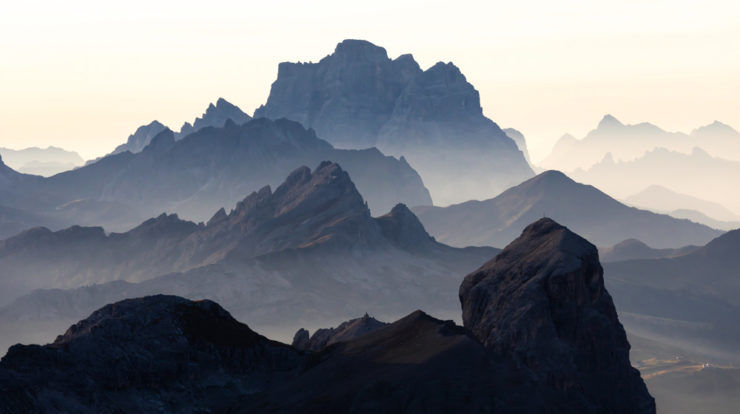

News
Terrapin Releases Working with Fractals
Catie Ryan
Share
Fractal patterns are an intricate ubiquitous machinery behind nature’s order, allowing for many of its complex processes to occur. In nature, complexity and irregularity are governed by underlying pattern and order. In 2014, we released the 14 Patterns of Biophilic Design, classifying fractals as one of many analogues for nature’s propensity for ‘Complexity and Order’, as to indicate “rich sensory information that adheres to a spatial hierarchy similar to those encountered in nature”. Yet science and mathematics tell us there is so much more going on with fractals that they could stand alone as their own pattern or, perhaps more accurately, as a thread through nearly any biophilic experience.

Beginning in February 2020, Italian environmental psychologist Rita Trombin served as Terrapin’s 2020 winter fellow. During her residency, Rita explored opportunities for providing the design community with practical tools for biophilic design application with a specific focus on developing foundational materials for designing with fractals.
Working with Fractals: A Resource for Practitioners of Biophilic Design is the result of Rita’s collaboration with Terrapin and several researchers and designers, and supported by the Living Future Europe, the European Cooperation in Science and Technology (COST) and Eurac Research.
The two-part document includes a whitepaper and toolkit that provide a high-level conceptual framework for thinking about designing with fractals and for promoting restorative and satisfactory environments, with a focus on the indoor environmental quality. The paper includes primary scientific research on fractals, perception and health, metrics and terminology used to discuss fractals. The toolkit offers perspectives on design, technology and other factors than may influence the creation of fractal patterns for design projects, as well as a selection of examples and case studies on fractal design application.
For more on the contributing parties or to download the paper, visit Terrapin’s publication page.
Header image: The fractal horizon of Puezgruppe, Wolkenstein in Gröden in Val Gardena, South Tyrol, Italy. Photo courtesy of Tobias Rademacher / Unsplash.
Catie Ryan
Catie is the Director of Projects at Terrapin and a leader in biophilic design movement. With a background in urban green infrastructure, Catie's interest lies in systems thinking to address human health and sustainability challenges at each scale of the built environment.
Topics
- Environmental Values
- Speaking
- LEED
- Terrapin Team
- Phoebe
- Community Development
- Greenbuild
- Technology
- Biophilic Design Interactive
- Catie Ryan
- Spanish
- Hebrew
- French
- Portuguese
- Publications
- Occupant Comfort
- Materials Science
- Conference
- Psychoacoustics
- Education
- Workshop
- Mass Timber
- Transit
- Carbon Strategy
- connection with natural materials
- interior design
- inspirational hero
- biophilia
- economics of biophilia
- Sustainability
- wood
- case studies
- Systems Integration
- Biophilic Design
- Commercial
- Net Zero
- Resorts & Hospitality
- Energy Utilization
- Water Management
- Corporations and Institutions
- Institutional
- Ecosystem Science
- Green Guidelines
- Profitability
- Climate Resiliency
- Health & Wellbeing
- Indoor Environmental Quality
- Building Performance
- Bioinspired Innovation
- Biodiversity
- Residential
- Master Planning
- Architects and Designers
- Developers and Building Owners
- Governments and NGOs
- Urban Design
- Product Development
- Original Research
- Manufacturing
- Industrial Ecology
- Resource Management
- Sustainability Plans
- Health Care
- Carbon Neutrality


